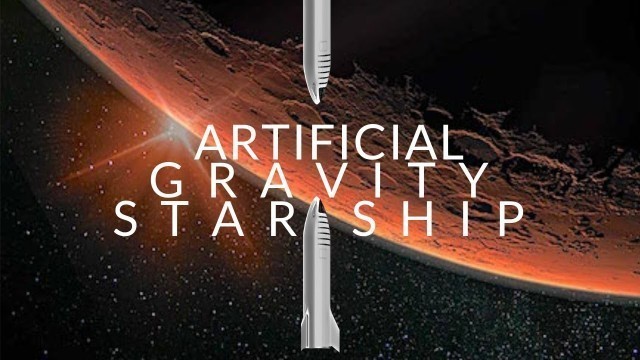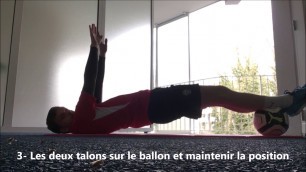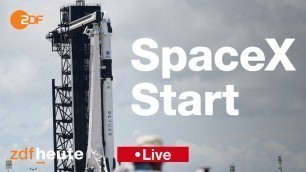

Why go to mars like it's 1995 if artificial gravity can be practical by 2024? Skip Intro: 2:07 Spin Grav & Propulsion Math: 7:13 Why Gravity is Important: 5:59 http://patreon.com/smallstars http://twitter.com/smvllstvrs http://instagram.com/smvllstvrs This is a concept that I am describing with an animation. The design as seen in the animation is just a visual representation and will likely be improved in future versions. The goal of the Gravity Link Starship concept is to provide a spin gravity that re-uses the main engines, taps left over fuel, and avoids impractical space construction and spacewalks. The GLS is basically a hub ship, like the hub of a wheel. Instead of humans and cargo the payload bay of the GLS is filled with truss that can robotically fold out and lock into place serving as the wheel's spokes. Once on the way to a distant destination like Mars, 2 Passenger Starships will make their approach to the attachment points at the ends of the deployed truss. Once attached, one Starship remains fixed while the other one slowly rotates it's orientation on it's swivel joint. At this point the main engines will facing opposite each other and will be used to spin the system, thus creating a centripetal force equal to earths gravity. When the desired spin speed and by extension amount of artificial gravity force is achieved, both Starships will swivel themselves into a resting position which is an orientation in line with the truss so that gravity is pulling in the correct direction, down towards the bottom of the ships. -LINKS- Spin Calculator: https://www.artificial-gravity.com/sw/SpinCalc/ Space Semen Issues: https://www.thesun.co.uk/tech/9335615/russian-scientist-semen-sample-space-cosmonauts/ Scott Kelly on the devastating effects of a year in space: https://bit.ly/2Zy2kSB Dr Robert Zubrin discussing the state of a Mars mission plan in 2014: https://www.youtube.com/watch?v=EKQSijn9FBs *I HIGHLY RECOMMEND THIS WHOLE VIDEO* even though he doesn't get into how exactly the counterweight and the manned spacecraft will achieve a worthwhile spin. -NOTES- I wrongly animated the co-rotation as a separate event from the main spin. Co-rotation is when the Starships swivel to change their orientation in relation to the truss. The swivel joint location in this video probably will not work as is, but if it could, the co-rotation would have to happen while the vacuum raptor burn pushes tangentially on the system to speed up the spin. Correction: At 1:54 I said that the speed of a spacecraft does not change when floating through the vacuum of space. This is not true because of how orbits work. The speed will decrease during the journey on the Starship's Hohmann transfer trajectory which should be thought of as a section of of an elliptical orbit around the sun. The way an elliptical orbit works is like this: while the spacecraft is on the half of it's orbit that is moving away from the sun (or body that it is orbiting) speed will decrease (this happens on the journey from Earth to Mars.) On the other hand, while the spacecraft is moving towards the sun on the other half of it's orbit, speed will increase (think return journey back to Earth.) All of this considered, my point was supposed to be that the Starship is not an airplane that has to contend with atmospheric drag. Instead, like a cannon ball, the spacecrafts will be aimed and fired towards mars and float the rest of the way. The physics of free floating through space is what will allow the GLS system to use energy to spin up, and then remain spinning for the rest of the journey, constantly providing gravity without having to use a significant amount of additional energy to maintain the spin. Correction: At 8:52 I said 25 meters per second for the tangential velocity of the system, when it's really 31 m/s while the passenger Starships are in their tangential orientation (pointing along the rim of the spin, not towards the center.) 25 m/s was a holdover mistake from when I had the truss connection at the nose of the passenger Starships. With a nose connection, when the ships swivel to rest position the lower decks would be farther from the center of the spin. The propellant required to start and stop the spin multiple times will still be available on this type of Hohmann transfer to mars. In the next video, GLS Version 3, I will include the loads math and animate the deployment of the truss structure and swivel joint action. Also, V3 will feature improvements to the design: 1. The truss shape will be improved (the old tuning fork shape was destined to fail) and 2. I will show cables that reinforce the tensile strength of the truss, taking on virtually all of the load of the passenger Starships as they pull outward with centrifugal force. I'm also working on a video about the shape of our solar system. Subscribe if you're interested!
Tags: spacex launch , SpaceX , Elon Musk , Rocket , NASA , Starship , space , raptor engine , science , technology , Star Wars , falcon , flight , star trek , Science Fiction , spacex news , International Space Station , cape canaveral , Rocket Science , Mars , Dragon , space shuttle , orbit , space flight , Velocity , gravity link starship , spin gravity , artificial gravity , propulsion , gls , centripetal force , deep space , phsyics , Life Support , Science Reality , Radiation , Star Liner , small stars
See also:

















comments